Troubleshoot Hot Tub Breaker Issues: 7 Common Causes and Fixes
January 13th, 2025
January 13th, 2025
Hot tubs are often seen as tranquil retreats within the confines of one's backyard—a personal oasis for relaxation and unwinding after a long day. However, the peace can quickly dissolve into frustration when a trip to the spa is thwarted by an errant circuit breaker. You find yourself standing there, towel in hand, staring at the box, wondering why your cherished hot tub has suddenly decided to engage in electrical mischief.
It's not just about resetting a switch and hoping everything falls back into place. There are underlying issues at play, each with its own potential cause, that require understanding and attention. Electrical systems can be surprisingly finicky, and when they go awry, it's essential to delve into the reasons behind the tripping breaker rather than merely addressing the symptom.
This isn't just a problem for seasoned hot tub aficionados. Even those new to the joys of backyard hydrotherapy can find themselves grappling with this unfamiliar hiccup. In my own experience, an evening soak turned into a puzzling night of troubleshooting when our hot tub decided to flip the breaker without any prior warning. Armed with nothing but a flashlight and some YouTube tutorials, I discovered that the reasons can be as varied as a loose wire, a faulty component, or even something as simple as water chemistry issues.
As we explore the seven reasons your hot tub might be tripping the breaker, think of this as both a troubleshooting guide and a way to keep your oasis bubbling without interruption.
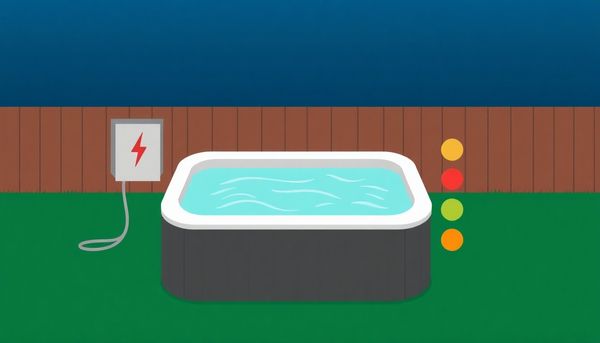
You've just settled into your hot tub, ready to unwind, when suddenly the breaker trips. Not the relaxation you had in mind, right? While this may seem like a daunting setback, troubleshooting common hot tub electrical issues can be straightforward. Let's explore some practical steps to get your spa bubbling again without unnecessary stress.
First, examine the breaker itself. Over time, wear and tear from frequent use or unexpected power surges can cause the breaker to malfunction. Flip the breaker switch to test its response. If it trips immediately, disconnect all nearby devices to see if the issue lies with the breaker itself. A persistent tripping might indicate it's time for a replacement.
Moisture is another common culprit. Check the breaker box for any signs of dampness. This could be due to rain, splashes from the tub, or humidity. Carefully dry the area with a towel and use a dehumidifier if needed. Once dry, reset the breaker and monitor for further issues.
Don't forget to consider corrosion, a sneaky problem that often hides in plain sight. Regularly inspect the wiring and components for rust or whitish residue. Addressing corrosion early can prevent more severe issues down the line. Cleaning with a wire brush or replacing damaged parts might be necessary.
For more intricate problems like wiring shorts or burnt wires, it’s best to call a professional. This ensures your spa remains safe and functional, leaving you to enjoy those much-needed soak sessions without worry.
In the realm of hot tub ownership, the GFCI breaker serves as both guardian and informant. When it trips, it's essentially shouting, "Hey, something’s not right here!" Before diving into panic mode or reaching for the phone to call in the cavalry, take a moment to troubleshoot the situation yourself. Resetting a tripped breaker could be as simple as flicking a switch, but understanding why it tripped in the first place is key to preventing future occurrences.
Begin by performing a visual inspection. Approach the breaker box with a curious eye and a trusty towel. Look for signs of moisture, as even a drop of water can flip the breaker switch. If you spot any dampness, gently dry the area and consider repositioning any nearby water sources. Of course, ensure the power is off while you do this to avoid any unintentional jolts of electricity.
Next, focus on potential wear and tear. A breaker that trips immediately upon reset might be worn out from years of service. Disconnect everything connected to the GFCI and give it another shot. If it continues to trip with no load, it’s likely time to replace the breaker.
Lastly, consider any recent changes. Have you rearranged components, or perhaps had some rodents playing house? Investigating these possibilities can often lead to straightforward solutions. By taking the time to reset and evaluate, you empower yourself with knowledge, keeping your hot tub safe and ready for the next relaxing soak.
Ever wondered why your hot tub decides to take an unplanned break and flips the breaker? One sneaky culprit might be moisture creeping into places it shouldn't, or even corrosion quietly festering over time. Water and electricity don't mix well, and moisture within your breaker box or around your spa's wiring can easily cause an electrical hiccup.
Moisture can sneak in during rainy spells, through splash-outs, or if your spa's location tends to flood. Once inside the breaker box, a little dampness is all it takes to send your GFCI into a frenzy. A quick inspection can often reveal droplets or a general dampness—perfect conditions for a tripped breaker. The remedy might be as simple as wiping things down and letting a fan or dehumidifier do its thing.
Corrosion, on the other hand, is like that annoying squeak you keep ignoring until it becomes a full-blown scream. Rust and whitish powder around connectors or components spell trouble. This not only jeopardizes your electrical system but can also mess with your water's chemistry. Corrosion thrives in humid environments, so take time to inspect wires and control panels for any signs of distress. Cleaning might suffice for minor cases, but extensive corrosion often calls for component replacements.
Keeping a vigilant eye on moisture and corrosion will not only prevent future breaker trips but will also extend the life of your hot tub, ensuring your soak stays uninterrupted.
The intricacies of hot tub wiring might seem daunting, but a little detective work can prevent your peaceful soak from turning into a breaker-flipping fiasco. Start by casting your eye over every wire and connector associated with your hot tub. Over time, connectors can wiggle loose or wires might suffer damage, especially if your spa has been relocated recently or if inquisitive critters have taken a nibble.
Experience has shown that a loose connection is often guilty of causing electrical mischief. A friend of mine once spent a frustrating weekend at his vacation cabin, perplexed by a hot tub that wouldn’t cooperate. It turned out a simple matter of tightening a few wayward connectors was all it took to bring his oasis back to life. So, if you find a wire that's only slightly loose, a snug push or a twist of a screwdriver might be your saving grace.
However, not all problems are this straightforward. Scorch marks or frayed insulation signal more serious issues, possibly from overheating or a short circuit. In these cases, replacing the damaged wiring is essential. Remember, safety is paramount—never hesitate to call in an expert if you're unsure. Carefully inspecting and fixing wiring and connectors can often clear up issues, letting you return to blissful bubbling without worry.
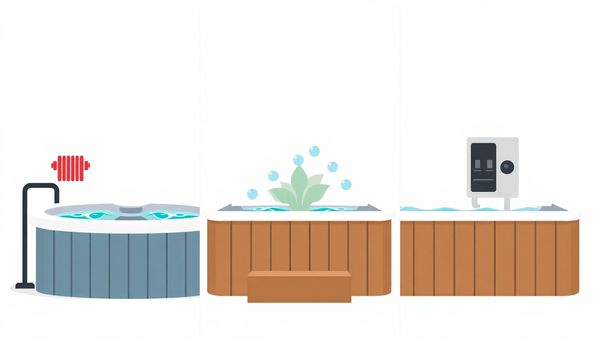
Moisture sneaking into places it shouldn't is a common saboteur when it comes to hot tubs. It may not be as visible as a storm cloud, but the havoc it can wreak is quite real. A friend once had a hot tub that was nestled under a lovely tree, and after a hefty rain, she found the GFCI breaker flipping every time she tried to power up the tub. The culprit? Rainwater had seeped into the breaker box.
To tackle this moisture menace, start by inspecting the breaker box. A flashlight can be your best friend here. Look for any signs of dampness or condensation. Often, the fix is as simple as drying out the box with a towel and ensuring no water pools around the area. If this doesn't solve the issue, enhancing the seal around your breaker box might be necessary, or relocating it to a more sheltered spot.
In some cases, persistent moisture issues may not just trip the breaker but could also lead to corrosion. Check for rusty or discolored connectors and wiring, as they’re often a sign of deeper water infiltration problems. Ignoring these signs might lead to a cascade of electrical issues that no one wants to deal with during a relaxing soak. A good habit is to routinely check the integrity of seals and covers, especially after heavy rains or if you notice any condensation around your hot tub's electrical components.
In the dance of circuits and currents, the hot tub's electrical system can sometimes miss a step, leading to a tripped breaker. When faced with such a hiccup, it’s crucial to approach the situation with a detective’s eye. Start by checking the ground fault circuit interrupter (GFCI) itself, which acts as the guardian angel of your relaxation haven, cutting power to prevent accidents. If the breaker trips immediately upon resetting, it may have aged beyond its years or suffered from an unexpected power jolt.
Moving on, inspect for moisture sneaking into the breaker box, potentially due to rain or splash-out during your last cannonball attempt. A quick dry-off with a towel and some time with a dehumidifier might just do the trick. However, if moisture remains a frequent culprit, consider relocating the box to a drier spot.
Corrosion often lurks around the corners, quietly wreaking havoc. Rust and white powdery residue can signal corrosion, which demands immediate attention. A wire brush might save the day for minor cases, but extensive damage could mean replacing parts entirely.
Lastly, unravel the mystery of wiring shorts. A stray wire could be unintentionally rubbing elbows with its neighbor, causing those pesky surges. Check each connection, ensuring they’re snug and free from damage. If you find any chewed or burned wires, it’s time to call in a professional or hone those DIY skills. With patience and attention, your hot tub will soon be bubbling happily again.
When it comes to keeping your hot tub breaker from tripping, one key step is to regularly inspect and maintain all its components. As someone who's had their fair share of electrical woes with their own tub, I can attest to the importance of this practice. A few years back, my hot tub would inexplicably trip the breaker every few days. After much head-scratching, I discovered a loose wire was the culprit. Had I routinely checked, the issue might have been spotted—and fixed—much sooner.
Start with the basics: examine the hot tub's electrical components, from the breaker box to the internal wiring. A flashlight can be your best friend here, illuminating any hidden signs of trouble like moisture or corrosion. Pay close attention to wire connectors, which can come loose over time or during maintenance. A simple tightening of screws might be all it takes to restore proper electrical flow.
Don't forget to inspect each spa component individually. Disconnect them one by one and reset the breaker to pinpoint any faulty equipment. A malfunctioning heater, for instance, could be causing the problem. Once identified, you must assess whether the issue is a simple fix, like a loose connection, or if it requires professional help due to more severe damage.
Regular inspection and maintenance not only prevent unexpected breaker trips but also extend the lifespan of your hot tub, ensuring many more relaxing evenings under the stars without electrical interruptions.
In the world of hot tubs, rust and moisture are stealthy saboteurs, quietly undermining your relaxation haven. Corrosion, the sneaky villain, can creep into your hot tub’s electrical components, particularly the GFCI breaker, wreaking havoc without making a sound. You might not notice it at first, but the signs are there—flaky rust, mysterious whitish powder, and erratic breaker behavior. A close friend once ignored these little hints, resulting in a costly overhaul of their spa’s electrical system.
It’s essential to regularly inspect the breaker box and the inner workings of your hot tub. Pay close attention to component connectors and wiring, areas where corrosion loves to hide. A flashlight and a keen eye will help you spot any rust or corrosion build-up. If you catch it early, a wire brush or electrical contact cleaner can often save the day. However, extensive damage might necessitate professional intervention.
Moisture is another culprit that can lead to unexpected breaker trips. Rainwater or splashout can find its way into the breaker box, causing a short circuit. A simple drying out might suffice, but if moisture becomes a frequent guest, consider relocating the box or enhancing its waterproofing.
Guarding against corrosion and moisture not only extends the life of your hot tub but also keeps those peaceful soaks uninterrupted. Remember, a little maintenance goes a long way in fending off these unwelcome guests.

In the realm of hot tub maintenance, spotting corrosion and damage is akin to uncovering hidden secrets that reveal why the breaker might be tripping. Corrosion is a sneaky culprit, often lurking in places you wouldn’t normally glance at during a casual inspection. Over time, moisture and chemicals can conspire to create rust and decay on metal components, leading to electrical faults that can trip your hot tub breaker.
Start your investigation by examining the GFCI box and the spa cabinet. Corrosion typically manifests as a whitish residue or rust on connectors, wires, and metal surfaces. It's important to check not only for visible rust but also for any discoloration or powdery deposits that hint at underlying corrosion. Pay close attention to wire connectors, control panels, and the ground wires. These areas are prime candidates for corrosion due to their exposure to moisture and electrical currents.
Repairing the damage might be straightforward if caught early. Sometimes, a simple cleaning with a wire brush and electrical contact cleaner can work wonders. However, if you find severe corrosion, it may necessitate the replacement of certain components. For instance, if a leak has caused the corrosion, addressing the source of the leak becomes paramount to prevent future issues. Don't forget to look for other signs of damage, such as wire breaks or burnt spots. Ensuring all connections are secure can also prevent unnecessary tripping of the breaker. By diligently identifying and addressing these problems, you can safeguard your hot tub's performance and extend its lifespan.
Moisture lurks as an often overlooked yet persistent culprit when it comes to hot tub woes. Rain, splash-out, or even high humidity can find its way into your GFCI breaker, causing it to trip. Moisture is like that guest who sneaks into the party unnoticed, only to cause a ruckus once inside. You might think you've covered all bases, but water has a way of sneaking into the smallest cracks.
Opening the breaker box, one might notice the telltale signs of dampness—a slight glisten on the metal surface or a drop stubbornly clinging to a wire. It's crucial to keep this area dry, as any moisture can disrupt the electrical current, flipping the breaker as a preventative measure. With a towel in hand, gently dab away any visible moisture. Sometimes, placing a fan nearby or using a dehumidifier can offer lasting solutions, ensuring the area stays dry and your hot tub stays functional.
But what if the issue persists even after drying? This might hint at a deeper problem, such as the need for a different placement of your breaker box or additional weatherproofing. Consistent moisture intrusion could lead to larger electrical issues, so it's worth considering a more permanent solution if the problem recurs. Whether it's a small fix or a call to a professional, addressing moisture can save both headaches and future repair bills, keeping your hot tub safe and ready for those relaxing evenings.
Wandering into the intricate world of hot tubs, one might overlook the silent soldiers that ensure everything runs smoothly—those seemingly inconspicuous wires. The vitality of wiring often goes unnoticed until a sudden blackout or a tripping breaker draws attention. It’s as if your hot tub is throwing a tantrum, demanding you check on its lifelines.
The first step in diagnosing the problem is a thorough inspection of the wiring. Over time, wires can suffer from wear and tear, or even become a playground for curious critters. Squirrels or mice might chew through them, oblivious to the chaos they cause. A flashlight becomes your trusty companion as you peer into the tangled nest of cables, looking for frayed edges or exposed copper.
Don't ignore any signs of burns or char marks, which might indicate that some wires have had a fiery encounter with an electric surge. These are the telltale signs that something's gone awry beneath the surface. Even a tiny abrasion could be the culprit behind your breaker’s persistent tripping.
Remember, though, that any work involving electricity requires caution. If the thought of tinkering with wires makes your palms sweat, it might be time to call in a professional. But sometimes, just spotting the problem can be half the battle, helping a skilled technician get straight to the heart of the issue. In the end, ensuring your wiring is intact might just bring your hot tub back to life, and you back to relaxation.
Rust never sleeps, and in the life of a hot tub owner, corrosion is a sneaky culprit that can lead to breaker troubles. When metal parts around your spa start to corrode, it can create electrical pathways that aren't supposed to exist, causing your GFCI breaker to trip. This can happen even if everything else seems to be running smoothly.
Think about how moisture and metal interact. Water finds its way into the smallest crevices, and over time, it partners with air to corrode metal surfaces. This is particularly true in environments like your hot tub, where warmth and humidity are constants. During routine maintenance, peeking into the breaker box and the spa cabinet can reveal telltale signs of trouble. Look for white powdery deposits or rusty streaks on metal connectors and wires. These are clear indicators of corrosion starting to take hold.
Cleaning corrosion is a delicate task but often manageable with a wire brush and electrical contact cleaner. For those who prefer to DIY, these tools can help keep the connections clean and intact. However, if you find extensive damage, such as wires that crumble at the touch, it’s best to replace the affected parts. A persistent issue might signal a hidden water leak, which needs prompt attention to prevent further damage.
Regular inspections can preempt the domino effect of rust and help maintain the longevity of your hot tub’s components. Save yourself the headache of unexpected breaker trips by tackling corrosion head-on.
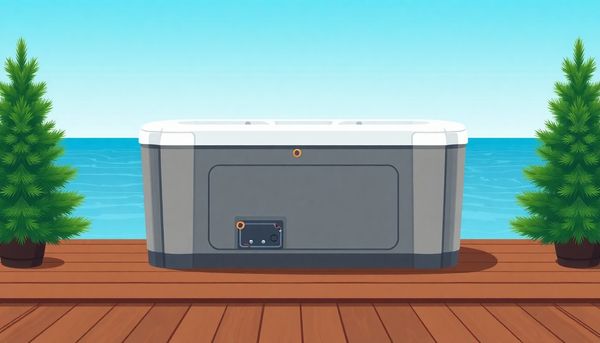
Loose wiring connections are the sneaky culprits behind many a tripped hot tub breaker, often lurking unnoticed until they cause a problem. It's as if your hot tub is whispering for attention, and one of the most straightforward yet overlooked checks is the integrity of its wiring connections. Over time, vibrations, regular use, or even an enthusiastic cleaning session can loosen these connectors, causing intermittent power disruptions. This leads to the GFCI breaker performing its job—a necessary interruption to prevent potential electrical hazards.
Start with a methodical inspection of your hot tub's control box. Armed with a screwdriver, gently tighten any screws that secure the wiring in place. Pay special attention to those plastic plug-style connectors; these can wiggle free with surprising ease. A firm push should ensure they are snugly seated, reestablishing the continuous electrical flow necessary for smooth operation.
Remember, while you might feel like a DIY pro, tread carefully. Safety is paramount, especially around electricity. Turn off the power supply before diving into any repairs. If you find damaged connectors or wires, replacement is necessary—not negotiable. And if this tinkering feels daunting, or the problem persists, calling in an electrician is a wise move. Loose connections may seem trivial, yet they hold the power to disrupt your serene soaking experience. Be thorough, solve the mystery, and let your hot tub return to its peaceful bubble of relaxation.
In the quest to maintain a hot tub that doesn’t keep tripping its breaker, pinpointing and testing problem areas is crucial. Identifying the root cause is akin to detective work, where observation and methodical testing lead to solving the mystery. Begin by visually inspecting accessible components for any signs of damage or irregularities. Look for burnt wires, loose connections, or moisture intrusion within the breaker box. Each of these could be the culprit behind your persistent electrical woes.
In my own experience, a seemingly insignificant splash of water during a particularly lively pool party was enough to create havoc. It took a careful inspection to spot the moisture that had sneaked its way into the breaker box. Armed with a towel and a dehumidifier, the issue was resolved without a need for professional intervention.
Yet some problems are less visible. Conduct a systematic check of each component: disconnect them one by one, resetting the breaker each time. A tripped breaker after reconnecting a specific component usually means you’ve identified the problem area. For example, I once discovered that a faulty heater element was the hidden source of my hot tub’s issues, proving that thorough testing can uncover even the most elusive problems.
By systematically identifying and testing each area, you can often pinpoint the exact issue causing the breaker to trip. This approach can save time and money, allowing you to enjoy uninterrupted relaxation in your spa sanctuary.
No one wants a relaxing evening in the hot tub cut short by a breaker tripping, much less a trip to the emergency room. Working around electricity and water demands caution, and ensuring safe-working conditions should be your top priority. Before you attempt any repair, make sure the power supply to your hot tub is completely turned off. This is not the time for shortcuts; even a small oversight can lead to a dangerous situation.
Start by checking your workspace. Keep it dry and clear of any clutter that might pose a risk. A clean, dry surface not only helps prevent accidents but also provides a better view of the components you're working with. Always use insulated tools, specifically designed for electrical work, to minimize the risk of electric shock.
If you're uncertain about your ability to manage the electrical aspects, don't hesitate to call in a professional. It might cost a bit more upfront, but it's a worthwhile investment for your safety and peace of mind. Experts have the proper training and tools to diagnose issues accurately and can guide you in preventing future problems.
Remember, a quick fix isn't worth compromising your safety. Ensuring safe-working conditions isn't just about preventing immediate danger—it's about enjoying your hot tub without a lingering concern for personal safety. After all, the goal is to relax, not to spend the evening worrying about what might go wrong.
Ever had a day when everything seems to go wrong, and your hot tub refuses to cooperate? One of the sneaky culprits behind a tripping breaker might just be a faulty component. These parts are often the unseen heroes, tirelessly working to keep your soak warm and bubbly. However, when they falter, they can trip the breaker, interrupting your much-anticipated relaxation.
Components like the heater, blower, or circuit board operate under constant stress, and over time, they can degrade or fail completely. Once, I had a friend whose hot tub heater gave out mid-winter. The breaker kept tripping, and after a bit of investigation, we realized the heating element was the culprit. It had corroded over time, leading to a short circuit. Replacing it was straightforward, but pinpointing the issue saved a lot of head-scratching.
To diagnose, you can disconnect each component from the breaker individually and test to see which one causes the trip. Once identified, replacing the faulty part becomes the next step. This might sound daunting, but with basic tools and a bit of patience, it’s manageable. For intricate issues or if you're uncertain, calling in a professional ensures safety and competence.
In the world of hot tubs, components will eventually demand attention, and knowing how to address them empowers you to enjoy many more peaceful soaks ahead.
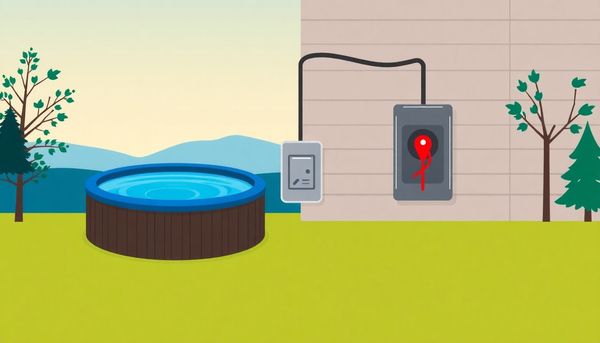
Hidden behind those soothing jets and relaxing bubbles lies a web of electrical components that keep your hot tub humming. When these components falter, though, a relaxing soak might turn into a frustrating breaker-tripping saga. Faulty electrical parts are often the unseen culprits. For instance, if your hot tub suddenly powers down, your first suspect should be the heater. It's notorious for developing issues over time. The heating element, which warms the water, can short circuit if it’s damaged or if mineral buildup occurs. This can cause the breaker to trip as a precautionary measure.
Another potential troublemaker is the circulation pump. If it stops working or struggles against debris, it may draw too much power, again triggering a trip. Inside the spa cabinet, other key players like the blower or ozonator could also misbehave if moisture creeps into their wiring. Even something as simple as a loose wire in the control panel might wreak havoc.
To tackle these issues, begin by disconnecting each suspect component from the breaker, one at a time. Restore power and watch for any breaker trips. Isolating the faulty part is a bit like detective work. Once pinpointed, inspect the component for visible damage or signs of wear. While some fixes, like tightening a loose connector, are straightforward, others might demand a professional touch. Addressing these problems promptly not only restores peace to your spa sessions but also ensures your hot tub’s longevity.
Troubleshooting your hot tub's GFCI breaker is like unraveling a mystery, one clue at a time. You start by staring down the circuit interrupter, a small but mighty guardian encased in a metal box, silently watching over your bubbling oasis. This little contraption, often overlooked until it trips, is designed to prevent electrical mishaps that could turn your pool of bliss into a dangerous trap.
When the GFCI breaker flips, your first step should be a simple reset. Flick it back on and observe. If it snaps right back to the off position, there's a high chance the breaker itself might be exhausted from years of service or recent electrical storms. Disconnect all hot tub components from the GFCI and try resetting again. A persistent trip even with nothing connected points to a fatigued breaker crying out for replacement.
However, water and electricity share a long-standing rivalry. Inspect the breaker box for any signs of moisture, which can cause unnecessary trips. A damp interior, whether from rain splash or a persistent leak, can disrupt the delicate balance of your system. Drying the box thoroughly with a towel and ensuring no more moisture enters might just solve your problem.
Remember, the goal here isn't only to reset the GFCI but also to understand why it tripped. Regular inspections, particularly for corrosion or loose connections, can prevent repeated breaker trips. By staying vigilant, you're not only preserving the life of your hot tub but also ensuring every soak is as safe as it is soothing.
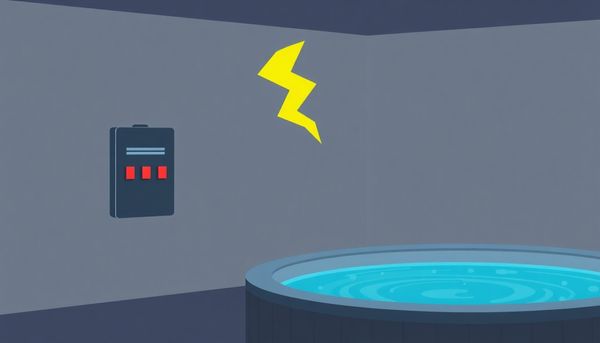
This article provided insights into maintaining your pool. Start your pool care journey today!
Want to become a pool maintenance expert? Our free Pool School course covers everything you need to know about pool care. From basic maintenance to advanced troubleshooting, you'll learn how to:
Join over 10,000 pool owners who have already transformed their pool care routine. Get started with our free Pool School course today!